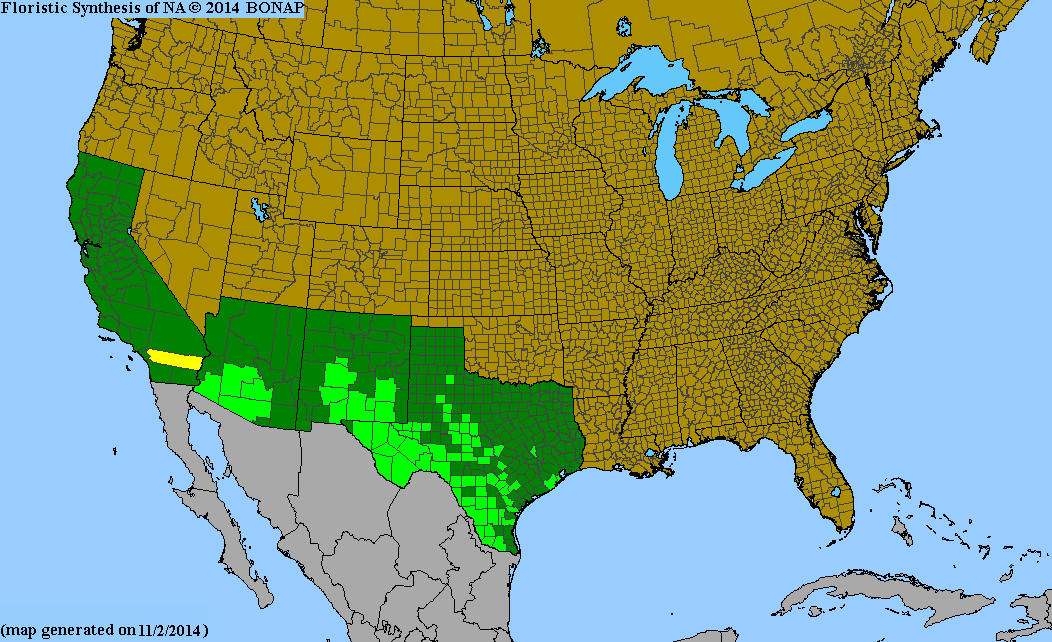Click on the images below to see larger versions.
| Scientific Name | Acleisanthes longiflora | USDA PLANTS Symbol | ACLO2 |
| Common Name | Angel's Trumpets | ITIS Taxonomic Serial No. | 19547 |
| Family | Nyctaginaceae (Four O’clock) | SEINet Reference |
Click Here |
| Description |
Habitat: Various dry soil types in deserts, grasslands, shrublands, or woodlands. Plant: Sprawling or erect, many-branched perennial; stems up to 3 ft. long. Leaves: Grayish-green blades lanceolate to linear-lanceolate or triangular-lanceolate to deltate, up to 1-1/2 long and 1-1/4 in wide; on petioles short to 1/2-inch long; margins undulate or crispate. Inflorescence: White, trumpet-shaped blossoms born in leaf axils; blossoms about 3/4-inch across with very slender elongated tubular portion up to 7 inches long connecting to stem; 5 lobes, protruding stigma and 5 stamens; blossoms opening in the afteroon and through the night. Bloom Period: Spring to fall. References: "Wildflowers of Texas" by Michael Eason, "Manual of the Vascular Plants of Texas" by Correll and Johnston, and Flora of North America. |
BONAP Distribution Map |
Texas Status: Native |
| Scientific Name | Acleisanthes wrightii | USDA PLANTS Symbol | ACWR3 |
| Common Name | Wright's Trumpets | ITIS Taxonomic Serial No. | 19549 |
| Family | Nyctaginaceae (Four O’clock) | Flora of North America Ref. | Click Here |
| Description |
Habitat: Open, semi-desert prairies; rocky, limestone soils; far West Texas and Big Bend. Plant: Perennial with several somewhat hairy stems, erect or spreading from base. Leaves: Opposite pairs of unequal length, curly, pale-yellowish green, oval to ovate, or ovate-lanceolate, 3/8 to 2 inches long; petioles half as long as blades. Inflorescence: White, erect, trumpet-shaped blossoms about 1/2-inch across with elongated tubular portion 1 to 2 inches long connecting to stem. Bloom Period: Spring to fall. References: "Manual of the Vascular Plants of Texas" by Correll and Johnston, "Rare Plants of Texas" by Poole, Carr, Rice and Singhurst, and Flora of North America. |
BONAP Distribution Map |
Texas Status: Native |








